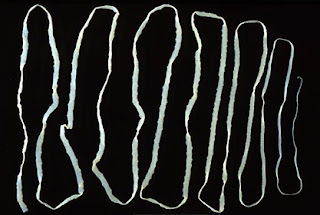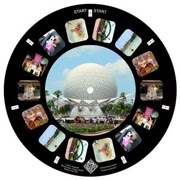Grant never found her inspiration from zombie lore. She found her foreshadow in a very real and growing horror story that is taking place all around us. This horror story is rooted in the very real notion that the our overindulgence in antibodies is beginning to render them obsolete.
And it is in any post-antibiotic world that humans will suddenly become vulnerable to the stuff that children used six or seven decades ago and were readily been toughened up against. Grant takes this story one step further by skipping the immediate failure of antibodies and into the next step of science.
Parasite is one solution to save modern medicine from collapse.
Grant sets the stage by choosing one of several directions (genetics, nanotechnology, biochemical enhancements, etc.) that future medicine may take and carries it out to a deeply disturbing conclusion. In the race to build a safer human, one company creates a genetically altered parasitic bodyguard that effectively boosts the human immune system for (its and our) mutual survival.
Once this parasite is proven effective in rushed human trials, the intestinal bodyguard is immediately mass produced and introduced all over the world as everyone wants to be healthier and live longer. Except, predictably, there is a problem with this medical experiment on a global scale — the parasites aren't necessarily satisfied with being slaves to their human hosts, which places the protagonist in an especially precarious position.
The story of Sally Mitchell, an unlikely survivor.
After barely surviving a car accident that left her on life support, Sally Mitchell miraculously regains consciousness just as her family and doctors are discussing terminating her for organ salvage. The miracle is attributed to her being among the first to receive an intestinal bodyguard.
 She received it, in part, because her father works for the military. His department was granted oversight of SymboGen, the company responsible for the development of the medical miracle.
She received it, in part, because her father works for the military. His department was granted oversight of SymboGen, the company responsible for the development of the medical miracle.Her survival was not without consequences. She lost almost all of her memory, forcing her to relearn everything (including the English language) while rebuilding bonds between herself and a disarranged family. They are both happy she is alive and disheartened because her personality is so different from the spirited and rebellious girl they have always known.
She is also the perfect storyteller because she has to learn the science that everyone else around her takes for granted. Her father and sister are scientists. Her boyfriend is a parasitologist. She is carefully monitored by SymboGen, the maker of the parasite credited with saving her life.
For some readers, Mitchell will likely come across as shallow, but this is by design. While she is more advanced than a child and has the ability to be a quick learner, the new Sally Mitchell or "Sal" only has the benefit of six years' worth of experiences. She isn't necessarily the most honest narrator either, given her propensity to read others superficially as well in this plot-driven opener.
A couple of graphs of Mira Grant a.k.a. Seanan McGuire.
Although the pseudonym is well known among fans, Seanan McGuire does adopt a darker and more mature flair for this persona. Or, if you believe the bio of Mira Grant, perhaps the opposite is true.
The author of a dozen novels under McGuire, she is best known for her urban fantasies that balance both creepy and quirky. Under Mira Grant, she also wrote the Newsflesh trilogy and two short stories for When Will You Rise, which was published by Subterranean Press. Grant relies less on quirky, but McGuire's voice is very noticeable among some characters.
Parasite By Mira Grant Digs In At 5.4 On The Liquid Hip Richter Scale.
Although not all the science is accurate, she does open some doors into scientific-medical curiosities that naturally make you wonder what people are doing behind closed doors. And perhaps even more spooky, she asks if you would be among those to try them. It's a significantly lighter read than many scientific-medical thrillers and occasionally comical, but a well-drawn and likable story nonetheless.
While keeping in mind this is a serial with an abrupt end, the foreshadow to what will become a pandemic — Parasite (Parasitology) — can be found on Amazon. The novel is also sold at Barnes & Noble or downloaded for iBooks. The audiobook is narrated by Christine Lakin, who makes Sally Mitchell very convincing as a character without a past and (perhaps) the only person on the planet she can trust. It's well worth the read as an introduction to entertaining fiction to come.
![Liquid [Hip]](https://blogger.googleusercontent.com/img/b/R29vZ2xl/AVvXsEjAFBQPqS7J0-rrttNoRYSsuwIePPZf4Nq6sqDioK1zzVQXJIQXKzq_NVNI4n6h3inuRQFBKOcJeZeSufkdHHIOxbSWyBjTjTxgKEQGyPzdwvkEEeECh4bI5YEGk4RWGUINSd7vulPQsCA/s1600-r/liquidhip.jpg)






























